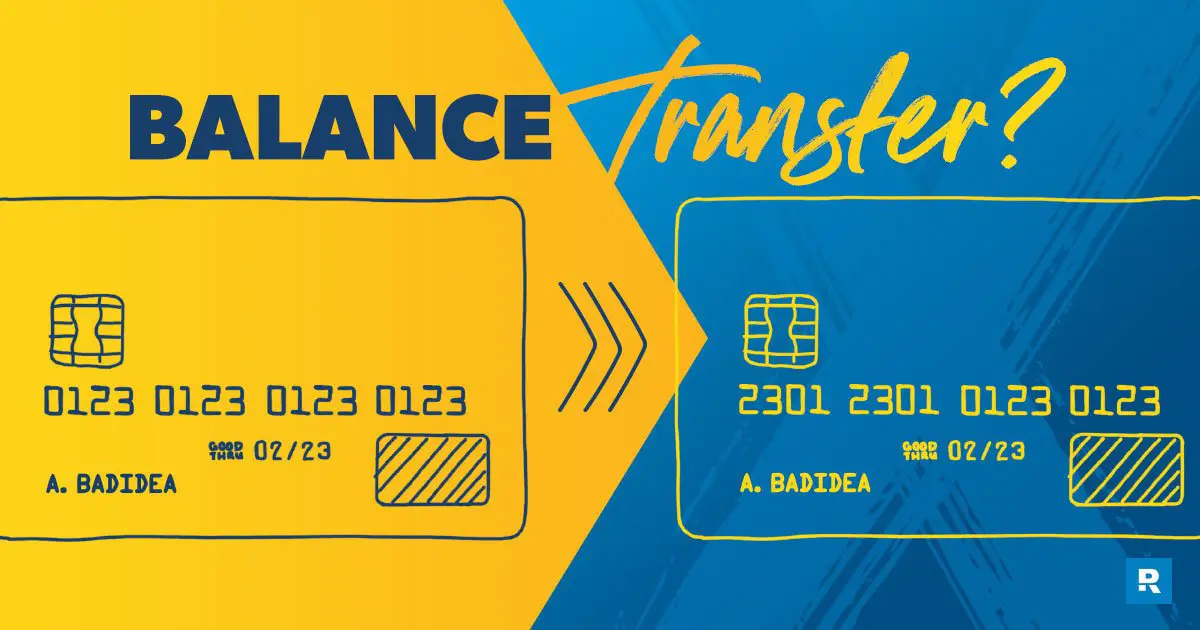Looking to save on credit card interest? Wondering what credit card balance transfer is all about? Well, you’re in luck! Credit card balance transfer allows you to move your existing credit card debt to another card with a lower interest rate. This simple solution can potentially save you a significant amount of money in interest charges. Just imagine, paying off your debt faster and more efficiently! So, how does it work? Let’s dive in and discover the ins and outs of credit card balance transfer.
What is Credit Card Balance Transfer?
Credit card balance transfer is a financial strategy that allows individuals to move their existing credit card debt from one card to another, usually with the intention of obtaining more favorable terms and conditions. It involves transferring the outstanding balance on one credit card to another card, typically with a lower interest rate or promotional offer.
A balance transfer can be an effective way to manage and reduce credit card debt, as it may provide an opportunity to save money on interest charges and potentially pay off the debt faster. By taking advantage of introductory interest rates or promotional offers, individuals can consolidate their debt and simplify their payments.
How Does Credit Card Balance Transfer Work?
Credit card balance transfer works by moving the outstanding balance from one credit card to another. Here’s a step-by-step breakdown of how the process typically works:
1. Research and comparison: Start by researching and comparing different credit card offers to find one that suits your needs. Look for cards that offer low or 0% introductory interest rates for balance transfers.
2. Apply for a new credit card: Once you’ve identified a suitable credit card, apply for it. Make sure to review the terms and conditions, including any transfer fees or limitations.
3. Transfer the balance: If approved for the new credit card, you can initiate the balance transfer. This usually involves providing the account details of your existing credit card(s) and specifying the amount you want to transfer.
4. Wait for the transfer: After initiating the balance transfer, it may take a few days or weeks for the balance to be moved from the old card to the new one. During this time, continue making payments on your old card to avoid late fees or penalties.
5. Start making payments: Once the balance transfer is complete, you can start making payments on the new credit card. Take advantage of any low or 0% introductory interest rates to pay down your debt more effectively.
Benefits of Credit Card Balance Transfer
Credit card balance transfer offers several benefits for individuals looking to manage and reduce their credit card debt. Some of the key advantages include:
1. Lower interest rates: One of the primary benefits of balance transfer is the potential for lower interest rates. By transferring your balance to a card with a lower rate, you can save money on finance charges and pay off your debt more efficiently.
2. Consolidation of debt: If you have multiple credit cards with outstanding balances, transferring them to a single card can simplify your financial situation. Instead of managing multiple due dates and payment amounts, you only need to focus on one card.
3. Save money on interest charges: By taking advantage of introductory offers or promotional rates, you can significantly reduce or even eliminate interest charges on your transferred balance for a specific period. This allows you to allocate more of your payments towards the principal, accelerating your debt repayment.
4. Potential for debt repayment acceleration: With lower interest rates and consolidated debt, you can potentially speed up your debt repayment. By paying more than the minimum payment each month, you can make significant progress towards becoming debt-free.
5. Improved credit utilization ratio: Transferring balances to a new credit card can also improve your credit utilization ratio, which is the percentage of available credit that you’re using. A lower credit utilization ratio is generally seen as favorable and can positively impact your credit score.
Considerations and Potential Drawbacks
While credit card balance transfer can be a useful strategy for managing debt, it’s essential to consider some potential drawbacks and factors to keep in mind:
1. Balance transfer fees: Some credit cards charge a fee for balance transfers, typically a percentage of the transferred amount. Make sure to compare the transfer fees and factor them into your overall cost savings calculation.
2. Introductory period limitations: Many balance transfer offers come with an introductory period during which you enjoy low or 0% interest rates. However, it’s crucial to be aware of the duration of this period, as any remaining balance after this period may attract higher interest rates.
3. Impact on credit score: Applying for a new credit card and initiating balance transfers can impact your credit score. When you apply for a new card, it results in a hard inquiry on your credit report, which may temporarily lower your score. Additionally, closing old credit card accounts after transferring balances can negatively affect your credit utilization ratio.
4. Temptation to accumulate more debt: When individuals transfer their credit card balances to a new card with a zero or low-interest rate, there can be a temptation to continue spending and accumulate more debt. It’s crucial to exercise discipline and avoid falling into this trap.
5. Not all debts are transferable: It’s important to note that not all types of debt can be transferred to a credit card. Balance transfers typically apply to credit card debt, and other types of debt, such as personal loans or mortgages, may not be eligible for transfer.
Is Credit Card Balance Transfer Right for You?
Determining whether credit card balance transfer is the right option for you depends on various factors and your specific financial situation. Here are some scenarios where balance transfer can be advantageous:
1. High-interest credit card debt: If you’re currently carrying credit card debt with high-interest rates, transferring the balance to a card with a lower or 0% introductory rate can help you save on interest charges.
2. Multiple credit card debts: Managing payments on multiple credit cards can be overwhelming. Transferring all your balances to a single card can simplify your financial situation and make it easier to track and manage your debt.
3. Ability to make additional payments: To make the most of a balance transfer, it’s essential to be able to make additional payments towards your debt. By paying more than the minimum amount due, you can accelerate your debt repayment and take full advantage of the low or 0% interest rate period.
4. Discipline and responsible spending habits: Balance transfer can be a valuable strategy for debt management, but it requires discipline and responsible spending habits. It’s crucial to avoid accumulating further debt and commit to a repayment plan.
5. Long-term financial goals: Consider your long-term financial goals and whether a balance transfer aligns with them. If you’re looking to become debt-free and improve your credit score, a balance transfer can be a step towards achieving those goals.
In conclusion, credit card balance transfer is a financial tool that allows individuals to move their existing credit card debt to a new card with more favorable terms and conditions, such as lower interest rates or promotional offers. It offers several benefits, including lower interest rates, consolidation of debt, potential savings on interest charges, debt repayment acceleration, and improved credit utilization ratio. However, it’s crucial to consider factors such as balance transfer fees, limitations of the introductory period, potential impact on credit score, temptation to accumulate more debt, and eligibility of debts for transfer. Assessing your specific financial situation and goals can help determine whether credit card balance transfer is the right strategy for you.
Balance Transfer Cards 101: Everything You Need to Know
Frequently Asked Questions
Frequently Asked Questions (FAQs)
What is credit card balance transfer?
A credit card balance transfer is a process that allows you to transfer the outstanding balance from one credit card to another. This can be beneficial if you have a high-interest rate on your current credit card and want to take advantage of a lower interest rate offered by another credit card.
How does a credit card balance transfer work?
To complete a credit card balance transfer, you typically need to apply for a new credit card that offers balance transfer services. Once approved, you provide the details of your existing credit card and the amount you wish to transfer. The new credit card company will pay off the balance on your old card and add the transferred amount to your new card.
What are the benefits of a credit card balance transfer?
Some of the benefits of a credit card balance transfer include:
– Saving money by taking advantage of lower interest rates or promotional offers.
– Consolidating multiple credit card balances into a single payment.
– Simplifying your finances by managing only one credit card.
Are there any fees associated with credit card balance transfers?
Yes, there are usually fees associated with credit card balance transfers. These fees are typically a percentage of the amount being transferred, ranging from 2% to 5%. It’s important to consider these fees when determining if a balance transfer is cost-effective for your situation.
Can I transfer the entire balance from my current credit card?
In most cases, you can transfer the entire balance from your current credit card to a new card. However, some credit card issuers may have limitations on the maximum amount you can transfer. It’s important to check the terms and conditions of the new card before initiating a balance transfer.
Will a credit card balance transfer affect my credit score?
A credit card balance transfer can potentially affect your credit score. When you apply for a new credit card, the issuer will perform a hard inquiry on your credit report, which can temporarily lower your score. Additionally, closing your old credit card account after transferring the balance can also impact your credit utilization ratio, which is a factor in determining your credit score.
Is there a time limit for completing a credit card balance transfer?
Yes, most credit card issuers have a time limit for completing a balance transfer. This time limit, often referred to as the promotional period, can range from a few months to a year or more. It’s important to complete the transfer within this period to take advantage of any promotional interest rates or offers.
Can I transfer a balance from a non-credit card debt to a credit card?
In some cases, it is possible to transfer a balance from a non-credit card debt, such as a personal loan or a medical bill, to a credit card. However, not all credit card issuers allow this type of transfer. It’s best to check with the issuer or consult their terms and conditions to determine if this is an option available to you.
Can I transfer a balance to the same credit card company?
In most cases, you cannot transfer a balance to the same credit card company. Balance transfers are typically between different credit card issuers. However, it’s always a good idea to check with your credit card company to confirm their specific policies regarding balance transfers.
Final Thoughts
A credit card balance transfer is a process where you move the outstanding balance from one credit card to another. This can be beneficial if you have a high-interest rate on your current card and want to take advantage of a lower rate on another card. By transferring your balance, you can save money on interest payments and potentially pay off your debt faster. However, it’s important to carefully consider the terms and fees associated with the transfer, as well as your ability to make timely payments. With a credit card balance transfer, you have the opportunity to manage your debt more effectively and potentially save money in the process.



